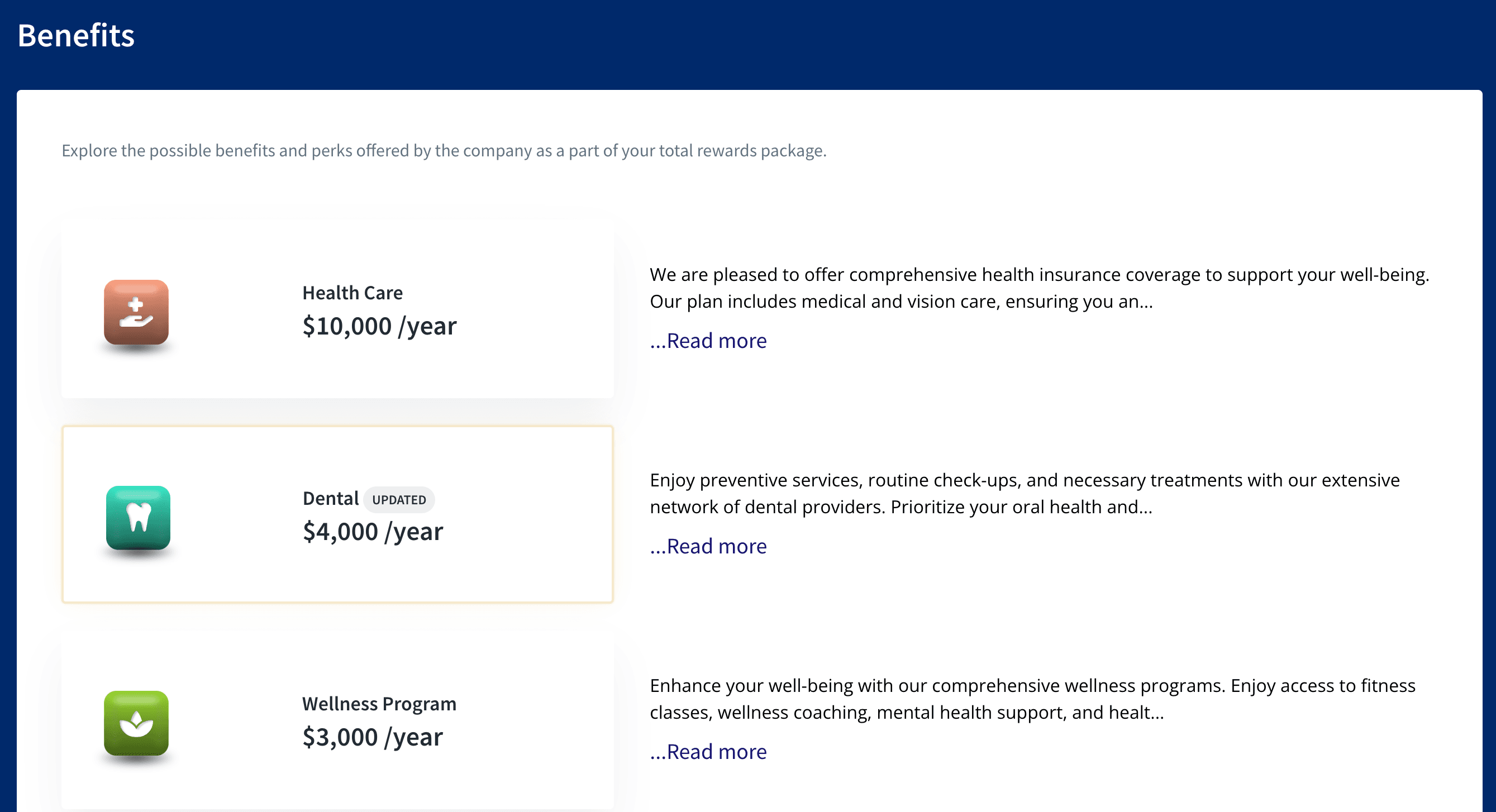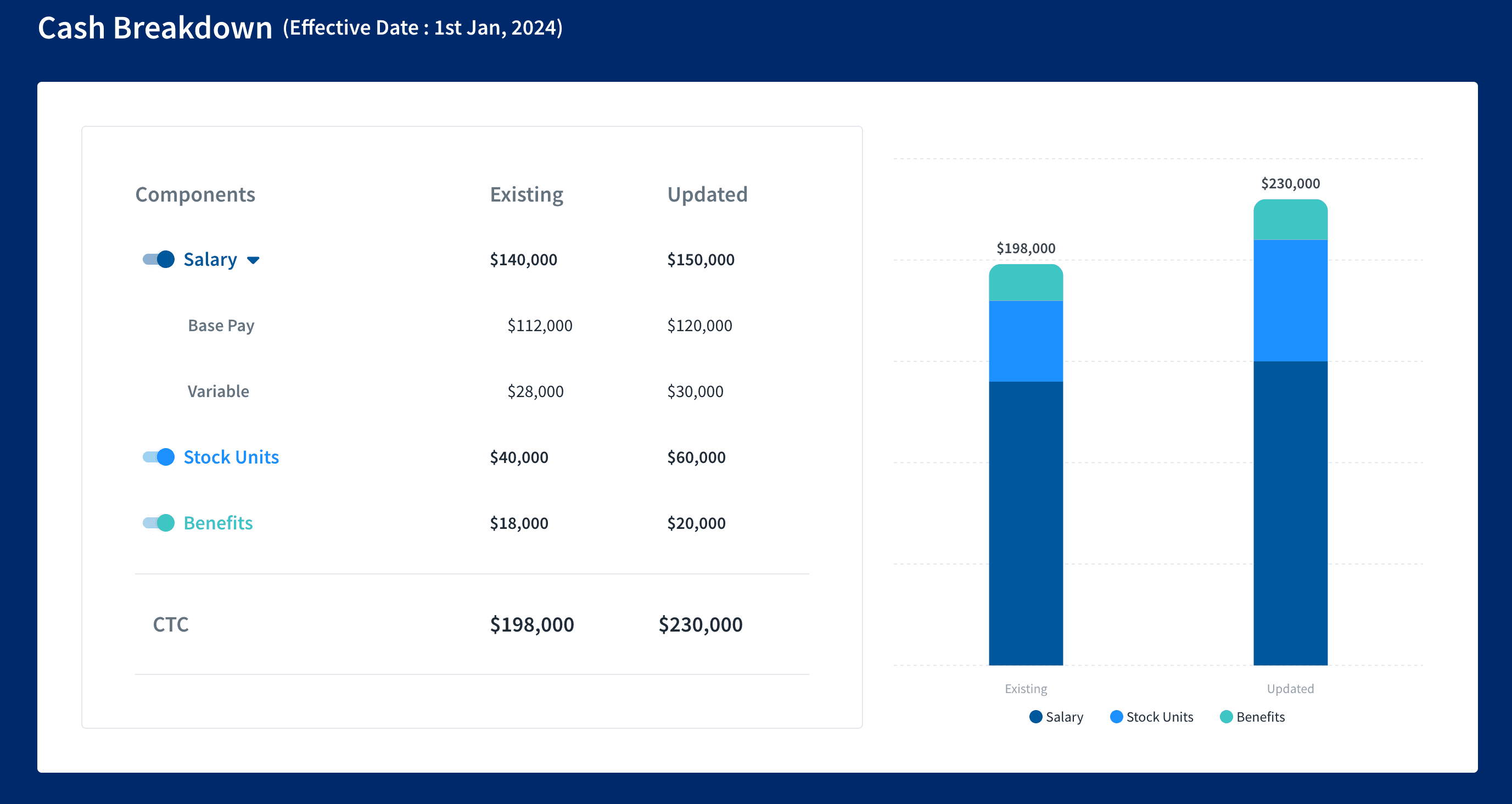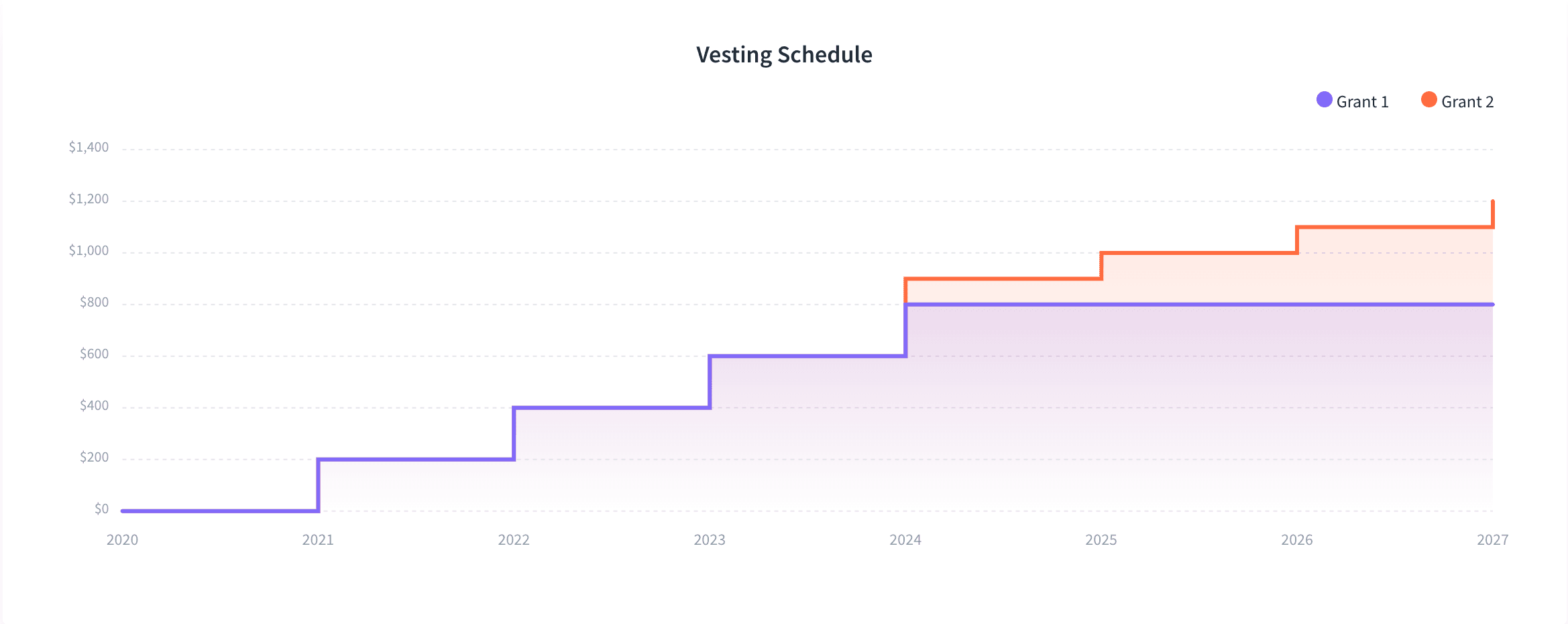
Henry Ford once rightly said, "If everyone moves forward together, success takes care of itself.” That collective growth leads to company success and when employees experience personal and professional growth, the company benefits as a whole.
So, to appeal to these employees, there must be something better than offering competitive salaries. Here’s the best way to do that - a well-crafted Total Rewards Strategy.
Such a strategy is needed to attract and retain the top-skilled employees in the market, which brings us to two very important terms "total rewards" and "total compensation".

The major differences between the two include -
Total Compensation is more specific to the remuneration or financial benefits that the employee tends to receive for the job they are designated to do.
This includes:
Base salary
Bonuses
Commissions
Total Compensation is specific to both the monetary and non-monetary benefits that carry a financial value like base salary, its primary focus is on financial rewards.
Total Rewards is broader, encompassing everything in Total Compensation and more. It includes:
It covers both monetary benefits and those that enhance overall employee satisfaction. Its primary focus is on accounting for the full value of all employee rewards.
It is also observed that organizations that have an unlimited set of paid time off have shown high productivity. Showing how employees who are given flexible hours off and unending time offs as well as other non-financial benefits become more productive.
To understand which strategy can be tailored to the needs of the employee, it is a necessity that the program consists of everything important, like the organization’s goals and needs of the employee. Such a program should keep in mind that:
Key elements or types of compensation that is envisaged in a Total Rewards Program:
Compensation refers to the direct financial compensation employees receive for their work. This includes:
Salary
Bonuses
Incentives it can also encompass:
Travel benefits
A well-rounded compensation package ensures higher employee performance and alignment with company goals.
Benefits provide additional benefits or financial and other indirect rewards beyond salary. Examples include:
Retirement plans
Paid leave
Wellness programs
Health insurance
These benefits make employees feel valued and play a critical role in retention.
Supporting work-life balance is essential for employee well-being. Companies can achieve this by offering -
Paid leave
Flexible working hours
Mental health support
A positive and supportive work environment
Adding this to the company culture gives them a sense of gratifying validation, which in turn motivates them to contribute even more to the future. Promoting balance helps employees manage both personal and professional responsibilities effectively.
Recognizing employee efforts boosts morale and motivation. Companies should:
Build recognition into the culture
Regularly acknowledge and appreciate contributions
This increases employee engagement and encourages greater contributions due to the culture of employee appreciation.
All prospective employees expect opportunities for growth. Companies should facilitate:
Mentorship programs
Skill-building and exposure opportunities
Such support that the company provides to its employees through a variety of opportunities. Also, for an employee, their ability to grow and develop their career while they are at work in their company seems like a minimal ask.
Compensation, in its entirety, is broadly categorized in two different forms like Direct Compensation like the overall annual salary and Indirect Compensation. This can be elaborated better below -
Incentives: Rewards tied to achieving specific goals.
Salary: Salary is the basic amount of remuneration agreed upon by the employees for their services.
Offering Shares: Many companies offer shares in the organization as part of their direct compensation offering them stock options as equity compensation.
Bonuses: Bonuses are given in addition to the already agreed salary by the employees based on their overall performance.
Paid Leave: Sick leave and other holidays that employees can take without having to lose pay.
Health Insurance: Insurance provided for the health of employees by the organization.
Retirement Benefits: Savings accounts and pension plans to help employees who are retiring from their service at the job.
Recognition of Employees: Recognition and appreciation of employees is a compensation benefit that is a significant part of an employer’s way of showing that the employee has truly done a good job and is an asset to the company and helps with the company growth.
Supportive Workspace: A supportive workspace included in the company culture promotes making employees feel more needed and valued, ensuring more committed work from them.
Career Development Opportunities: Training and mentorship are all means to provide such opportunities for employees to have exposure to their skills. This will also encourage future and current employees to have a great impression of the company.
Total rewards compensation means a comprehensive package that is inclusive of both monetary as well as non-monetary means of compensation.
Monetary compensation includes both direct and indirect compensation, but with it, when we add non-monetary compensation like wellness programs and more, it becomes a holistic package for any prospective employee of the company.
A total rewards statement is a statement in the form of a document providing the full value of the entirety of the compensation and benefits provided to an employee from an organization. It entails not just the base pay given but also the additional benefits such as retirement plans, incentives, insurance, and plenty more, communicating to the employee about the complete employee’s reward package.
Transparency and Communication: The statement ensures transparency, helping employees understand the full scope of their rewards. This clarity boosts engagement and attracts top talent.
Supportive Workplace: A supportive environment, offering flexibility and care, fosters employee satisfaction and increases productivity.
Employee Engagement: By clearly communicating rewards, employees can see the long-term value of staying with the company, helping with employee retention and employee engagement.
A methodical understanding of several factors, such as employee needs, organizational goals, and additional employee benefits is needed to ensure this. The key steps to ensuring a strategy that aligns with these elements are:
Market Research: Conduct thorough market research to stay competitive. To take into account what the competitors have as part of their Total Rewards package, helps craft a better and appropriate package, giving your organization an edge in attracting top talent.
Career Advancement Opportunities: Offer strong training programs and mentorship. Demonstrating investment in employees’ growth and providing opportunities for skill development keeps them engaged and motivated.
Clarity of Communication: Clearly communicate the full value of the compensation package. Transparency improves employee satisfaction and boosts retention.
Evaluating Employee Needs: While employee needs don’t always take priority, addressing them where possible fosters productivity. Offering flexible hours and a balanced rewards package also supports a healthy work-life balance, benefiting both employees and the organization.


CompUp also enables companies to track their Total Rewards strategy and make necessary adjustments to meet the evolving needs and expectations of their employees.

So, a total reward system acts as a complete package and more importantly a compensation strategy that covers both the financial aspects of a compensation or monetary compensation as well as the non-monetary benefits.
Click here to know more about the features of CompUp’s total rewards statement.
Revolutionizing Pay Strategies: Don't Miss Our Latest Blogs on Compensation Benchmarking